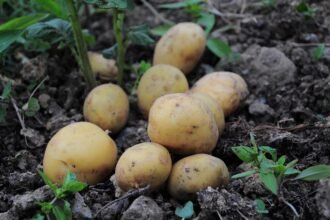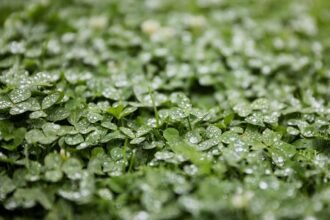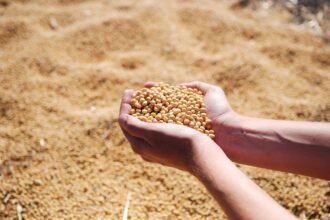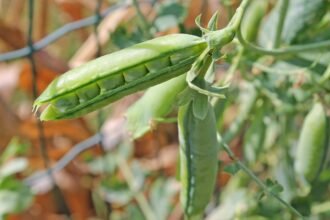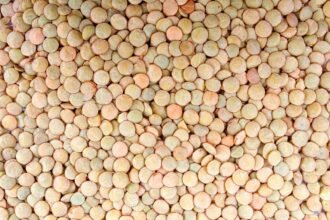Carrots (Daucus carota) are one of the most popular root vegetables, known for their nutritional value, versatility, and widespread consumption worldwide. Rich in vitamins, particularly vitamin A, and essential minerals, carrots are a valuable addition to the human diet. Grown in a variety of soils, carrots require specific cultivation practices to ensure optimal growth, uniform root development, and high-quality produce. This comprehensive guide provides an overview of the key aspects of carrot farming, from soil preparation to post-harvest handling.
1. Soil Preparation and Fertility Management
Carrots grow best in well-drained, sandy loam soils that allow for easy root expansion. Proper soil preparation ensures healthy root development and high-quality carrots.
Key Steps:
- Soil Testing: Conduct a soil test before planting to assess nutrient levels and pH. Carrots prefer slightly acidic to neutral soils with a pH range of 6.0 to 6.8. If necessary, apply lime to raise the soil pH, particularly in acidic soils.
- Tillage: Carrots require loose, deep soil for proper root development. Avoid compacted soils, as they can lead to deformed roots. Use plowing or deep tillage to break up the soil to a depth of at least 25–30 cm (10–12 inches) to allow for proper root expansion.
- Fertilization: Carrots are moderately nutrient-demanding. Apply a balanced fertilizer containing nitrogen (N), phosphorus (P), and potassium (K) before planting. Excessive nitrogen should be avoided, as it may lead to excessive foliage growth rather than root development. Apply phosphorus at planting for strong root growth, and potassium during the growing season to enhance tuber formation and quality.
- Organic Matter: Incorporating organic matter such as compost or well-rotted manure can improve soil structure, moisture retention, and nutrient content, particularly in sandy soils.
2. Selecting the Right Carrot Variety
Choosing the right carrot variety based on local conditions and market demand is essential for maximizing yield and ensuring high-quality produce.
Carrot Varieties:
- Nantes Varieties: These varieties are known for their sweet flavor, smooth texture, and cylindrical shape. They are commonly used for fresh consumption and storage.
- Danvers Varieties: These are slightly longer and have a tapered shape. Danvers carrots are often used for processing and have good disease resistance.
- Imperator Varieties: Known for their long, slender shape, these carrots are often grown for fresh consumption and retail markets.
- Chantenay Varieties: These carrots have a short, thick shape and are ideal for growing in shallow or heavy soils. They are often used for processing.
- Hybrid Varieties: Hybrids are bred for specific qualities, such as faster growth, improved disease resistance, and higher yields.
Select varieties suited to your climate, soil type, and market preferences (e.g., fresh, processed, or storage).
3. Planting and Sowing Techniques
Carrots are typically grown from seed, and proper planting techniques are essential for uniform germination and root development.
Key Steps:
- Planting Time: Carrots are cool-season crops and should be planted in early spring or late summer when soil temperatures range between 10–20°C (50–68°F). Carrots can tolerate light frost, making them suitable for early spring and fall planting.
- Sowing Depth: Carrot seeds should be planted at a shallow depth of 0.5–1 cm (0.2–0.4 inches). Shallow planting ensures better seed-to-soil contact and uniform germination.
- Row Spacing: The recommended row spacing for carrots is 30–40 cm (12–16 inches) to allow enough space for root growth. Within-row spacing should be about 2–4 cm (0.8–1.6 inches) between seeds.
- Seed Rate: The seed rate for carrots typically ranges from 3–5 kg per hectare, depending on the variety and desired planting density.
4. Water Management
Consistent moisture is essential for proper carrot growth, particularly during germination and root formation. However, carrots do not tolerate waterlogging, so water management is key.
Key Steps:
- Water Requirements: Carrots require approximately 500–600 mm (20–24 inches) of water per growing season, with the highest water requirement during the first few weeks after planting and during root development.
- Rain-fed vs. Irrigated Systems: Carrots can be grown under rain-fed conditions in areas with adequate rainfall. However, in regions with inconsistent rainfall, supplemental irrigation is necessary, particularly during dry periods.
- Irrigation Techniques: Use drip irrigation or sprinkler systems to ensure uniform water distribution and reduce water wastage. Avoid overhead irrigation when possible, as it can wet the foliage and promote the spread of fungal diseases.
5. Nutrient Management
Proper nutrient management is essential to support healthy carrot growth and high-quality root development.
Key Steps:
- Nitrogen Fertilization: Apply nitrogen in small, split doses—half at planting and the rest during the growing season to encourage balanced growth. Excessive nitrogen can lead to excessive top growth and small roots.
- Phosphorus and Potassium: Phosphorus is crucial for root development, so apply it at planting. Potassium should be applied during the growing season to support root size and quality.
- Micronutrients: Carrots also require micronutrients such as calcium and magnesium. Calcium is especially important for preventing tip burn and ensuring smooth root development.
6. Weed Control
Weed control is essential to ensure that carrots have adequate access to nutrients, water, and light. Weeds can reduce yield and quality by competing with carrots for resources.
Key Steps:
- Pre-emergence Herbicides: Apply pre-emergence herbicides to control early-stage weeds before carrots emerge. This can help reduce early weed competition.
- Manual Weeding: In smaller-scale operations, manual weeding may be necessary, particularly during the early stages when weeds are most competitive.
- Mulching: Apply organic or plastic mulch around carrot plants to suppress weed growth, retain moisture, and regulate soil temperature. Mulching can also improve root cleanliness and quality.
- Crop Rotation: Rotate carrots with other crops, such as legumes or cereals, to reduce weed pressure and improve soil health.
7. Pest and Disease Management
Carrots are susceptible to several pests and diseases, which can affect plant health and reduce yield. Effective pest and disease management practices are essential.
Common Pests:
- Carrot Root Fly: The larvae of this fly burrow into the roots, causing damage. Use row covers or insecticides to control this pest.
- Aphids: Aphids feed on plant sap and can transmit viruses. Control aphids with insecticides or encourage natural predators like ladybugs.
- Cutworms: These pests feed on seedlings, cutting them off at the soil line. Protect seedlings using insecticides or physical barriers like collars.
Common Diseases:
- Alternaria Leaf Blight: A fungal disease that causes lesions on the leaves, reducing photosynthesis and weakening plants. Use fungicides and resistant varieties to control this disease.
- Downy Mildew: This fungal infection affects leaves and stems. Use fungicides and proper crop rotation to reduce the risk of downy mildew.
- Fusarium Wilt: A soil-borne fungal disease that affects the roots, causing wilting. Use resistant varieties and practice crop rotation to manage this disease.
- Integrated Pest Management (IPM): Combine biological controls, crop rotation, and minimal pesticide use to manage pests and diseases effectively.
8. Harvesting and Post-Harvest Handling
Harvesting carrots at the right time and handling them carefully after harvest is essential to maintain their quality and minimize losses.
Key Steps:
- Harvest Timing: Carrots should be harvested when they reach full maturity and the root size is suitable for market. Typically, this occurs 70–90 days after planting, depending on the variety.
- Mechanical Harvesting: For large-scale operations, use mechanical harvesters to dig up the carrots. These machines minimize labor costs and reduce root damage.
- Manual Harvesting: In smaller operations, carrots can be manually harvested using hand tools. Take care to avoid bruising or damaging the roots during harvesting.
- Post-Harvest Handling: After harvesting, remove any soil and debris from the carrots. If storing, ensure that the carrots are not exposed to high temperatures or humidity to prevent spoilage. Carrots should be stored in a cool, dark place with proper ventilation.
- Storage: Store carrots at a temperature of 0–4°C (32–39°F) and a humidity level of 90–95% to prevent wilting and maintain freshness. Proper storage helps extend shelf life and preserve quality.
9. Sustainable Carrot Farming Practices
Sustainable practices are crucial for reducing environmental impact and maintaining soil health for long-term potato production.
Sustainable Practices:
- Crop Rotation: Rotate carrots with other crops like legumes or cereals to reduce pest pressure, improve soil fertility, and break disease cycles.
- Conservation Tillage: Minimize tillage to prevent soil erosion, improve soil structure, and conserve moisture.
- Water Management: Use efficient irrigation systems such as drip irrigation to conserve water and reduce water usage.
- Organic Farming: Consider growing carrots organically to reduce reliance on synthetic fertilizers and pesticides, benefiting both the environment and farm profitability.
Conclusion
Carrot cultivation requires careful attention to soil health, water management, pest control, and harvesting techniques to ensure high-quality produce. By following best practices for planting, pest management, and sustainable farming, you can achieve high yields and maintain the nutritional value of your carrots. Whether you are growing carrots for fresh consumption, processing, or storage, understanding the key technical aspects of their cultivation is essential for long-term success.





